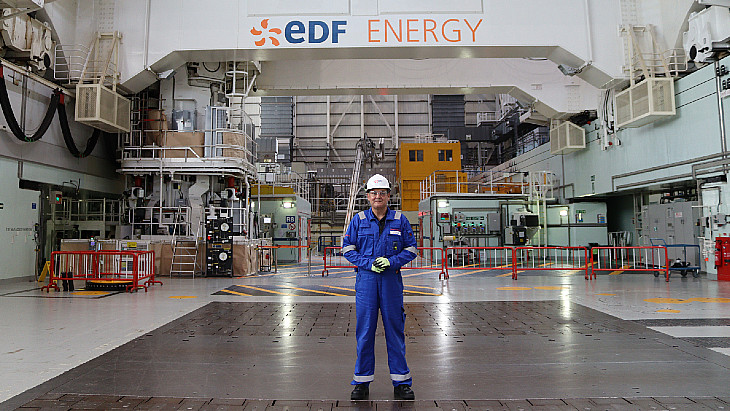Viewpoint: Can a regulated asset model help deliver new investment?

An earlier World Nuclear News Viewpoint discussed the reasons why new NPP investments may not be viable in liberalised electricity markets, absent supporting mechanisms. We outlined a range of options for new NPP investments in response to the UK's Department of Business, Energy & Industrial Strategy (BEIS) Inquiry on Financing Energy Infrastructure and Nuclear Economics Consulting Group Commentary #30 is a response to the BEIS regulated asset base model consultation.
Challenges for new nuclear investment
Any approach to delivering new NPP investment must address long lead times, completion risk, revenue risk, political/regulatory risk, and various industrial challenges.
NPPs have intangible outputs (e.g. energy security, energy diversity, and emissions-free electricity) that provide significant value to countries and electricity systems. However, these intangible outputs may not provide value to NPP project developers, because they are not compensated in electricity markets.
A new NPP needs years of work and up-front project development costs to justify a final investment decision and the start of nuclear construction. It takes another five or more years until the NPP is completed and placed into operation. The long timeframe for nuclear development and the long operating life of NPPs mean that future cash flows are exposed to discounting, requiring higher rates of return and/or higher future electricity market prices to support a positive investment decision.
Completion risk refers to the potential for an NPP to take longer than planned; cost more than planned; and/or be abandoned prior to completion. The unfavourable completion risk track-record of new NPPs in Europe and the United States has made non-recourse project finance not feasible and projects will need uncapped completion guarantees that are beyond the financial capability of most project investors, developers, and suppliers. The only entities with the financial capability to absorb NPP completion risk are governments and government-owned nuclear companies.
An NPP also faces the risk that future net revenues may not provide an acceptable return on investment. Revenue risk arises from uncertainty in NPP operating performance; uncertain future electricity market prices; uncertain offtake volumes and curtailment; changes in regulatory frameworks; and changes to nuclear licensing requirements.
The long lead time and long operating life of an NPP project also mean that the political views of nuclear power and the electricity regulatory systems are likely to change.
A regulated asset model can help provide a long-term, stable NPP project structure that reflects the value of intangible nuclear power outputs and that can survive changes in political views of nuclear power and in electricity system regulatory systems.
Regulated asset model can work, but…
A regulated asset model can help deliver new NPP investments because it provides a relatively safe rate of return. However, this model must address completion risk and potential project abandonment prior to completion.
As discussed above, potential NPP investors expect cost overruns to be included in regulated assets, but this will put ratepayers at risk. Negotiating a fair middle-ground about sharing completion risk between key NPP project stakeholders and ratepayers (i.e. represented by the economic regulator) will be difficult.
A more difficult case is when NPPs are abandoned before completion, but after significant investment. Options include completing the NPP, with an increase in regulated asset recovery amounts; or abandoning the NPP, with recovery of the amounts spent to date. US experience with regulated NPPs shows the remaining uncertainty about how cost overruns and abandoned NPP investments are treated.
Not an easy fix
The regulated asset model involves multiple parties, including the NPP developer/owner, an economic regulator, ratepayers, and others. The regulated asset model includes mechanisms to share or apportion risk between among these parties.
If a regulated asset model is already established, with a long relationship between regulated utilities and economic regulators and repeated investments over decades, it may be relatively simple to add features intended to support new NPP investments.
Establishing a new regulated NPP asset model will take a lot of work over a long time in the face of political and public scrutiny and even opposition. Arrangements must satisfy all parties involved and protect the public interest. A new regulatory body must be established to undertake the critical tasks of monitoring and managing the process and a new economic counterparty may be needed to manage and secure the agreed rate payments.
A newly-established regulated asset approach focused on NPP projects may mean that each project is the first, and potentially the last, major bespoke interaction between the economic regulator and any NPP developer/owner.
The proposed British RAB model may facilitate funding for completion of new NPPs in the context of an established electricity market and an experienced government-owned nuclear operator and project developer that is currently building and developing new NPP projects using its own nuclear reactor design and supply chain and financial standing. However, it is unclear whether the British RAB model would attract new NPP developers or new funding sources.
The success of a regulated asset model in delivering the desired level and type of new NPP investment will be determined by the regulated asset model details, but also by NPP project details (i.e. total project cost; the 'proven-ness' of the NPP technology and the project delivery team; the availability and price of debt; and the experience, resource capacity, and long-term interest of project developers) and by the political and regulatory environment.
Experience may provide useful lessons
Great Britain has applied a regulated asset model for privatisation of existing government companies, but there is limited experience applying it to new build projects.
US regulated asset nuclear investment, centered on vertically-integrated regulated utilities that invested in NPPs as a part of the generation portfolio in the 1970s/1980s, is extensive. Cost overruns, schedule delays, and abandonment of U.S. NPP projects in this period resulted in prudency reviews and disallowances.
Some US states, including Georgia and South Carolina, modified the regulatory asset model to limit regulatory uncertainty for both NPP developers and economic regulators and to support new NPP investment. Despite new NPP investment decisions in both states, the outcome in South Carolina (i.e. abandonment of the regulated Summer 2 & 3 NPP project) shows that more work is needed.
Details matter
A regulated asset model can help overcome NPP project challenges, but the details matter. It will work best if there is political will and public support for NPP development and the regulated NPP has good project development, good project management and oversight, and a solid economic case.
Countries looking to add new NPP investment can craft a regulated asset model to deliver new NPP investments, but this will require significant analysis that examines all key elements of a project and its development and execution.
Each country should consider the regulated asset model relative to other project structuring approaches. As we suggested in earlier input to BEIS, other approaches (e.g., direct government investment) may be easier to implement and more efficient to execute, if the right conditions and budgetary resources exist.










